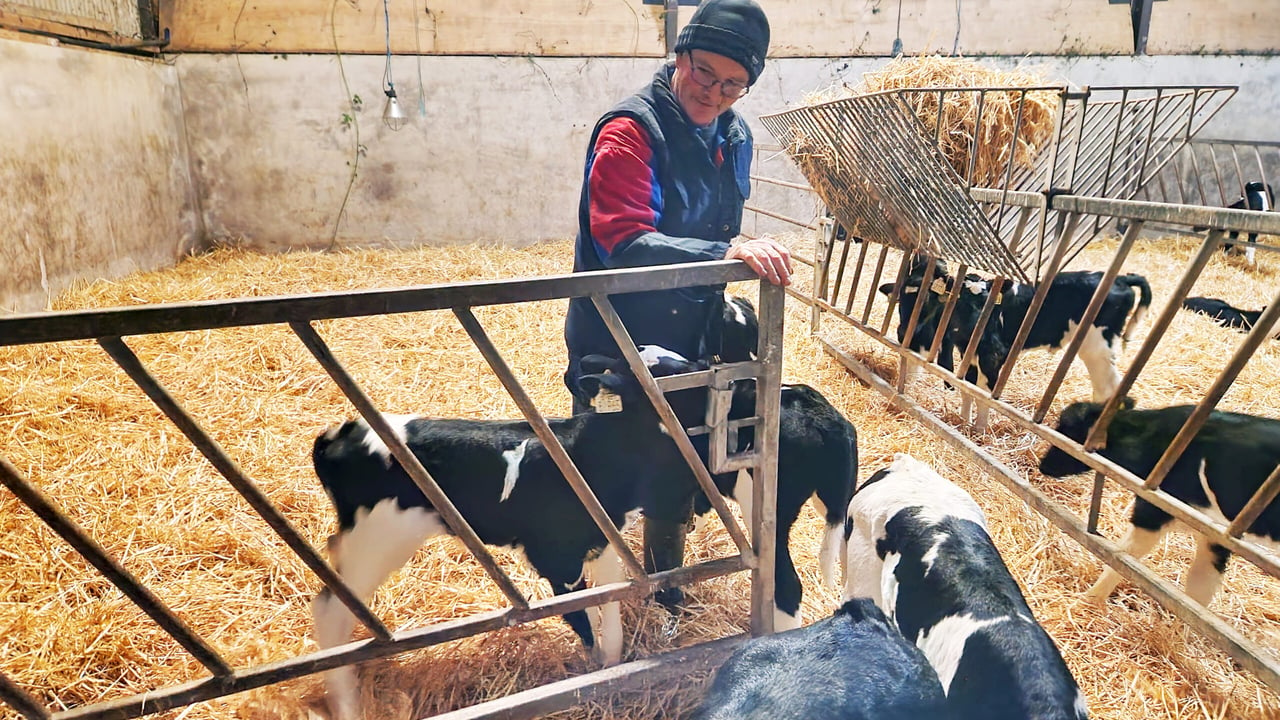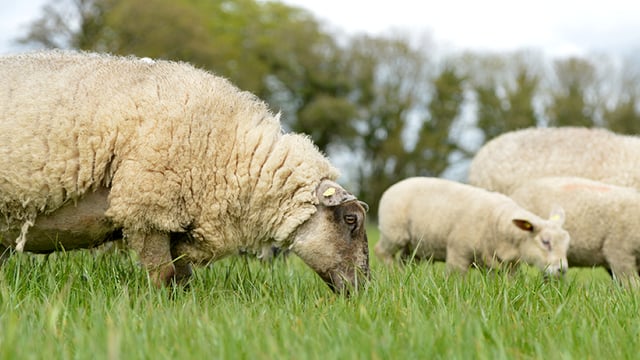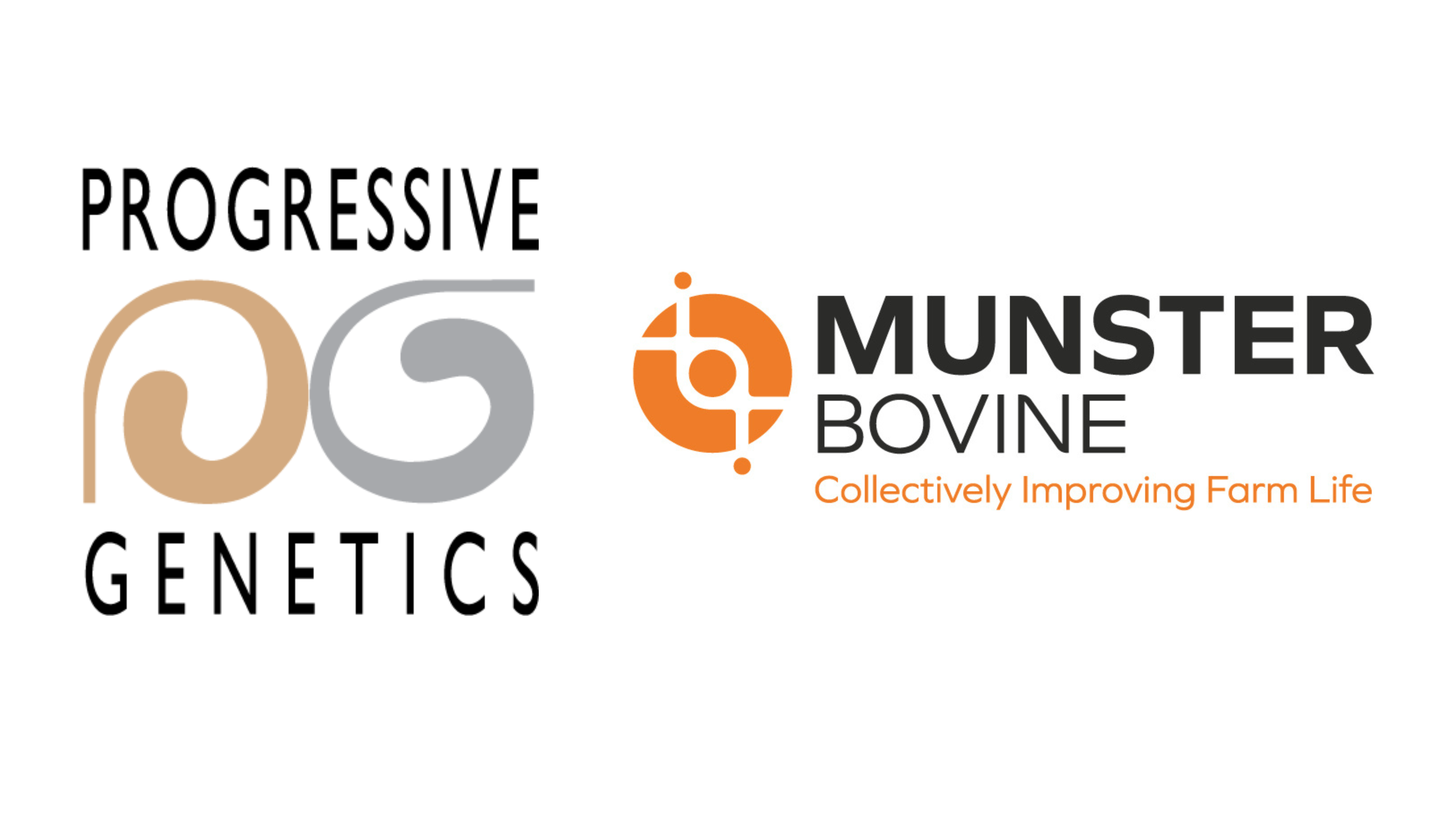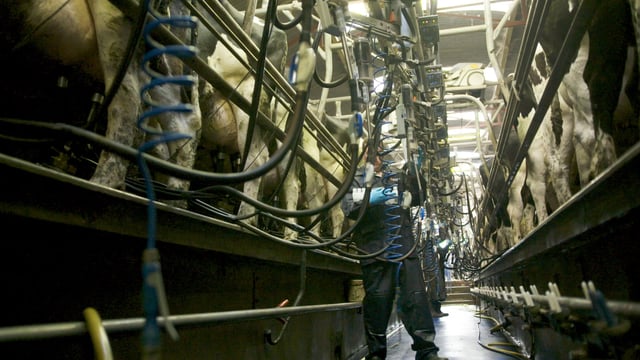Sponsored Article

Sponsored Article
Training calves to an automatic calf feeder in Cork
Sponsored Article

Larry and Annette Kearney and their son, Jack, milk 160 spring-calving Holstein Friesian cows near Rathcormac, Co. Cork.
They synchronise their heifers to calve at 24 months old, with calving getting underway in the last week of January; 90% of the herd calves in the first six weeks.
The Kearneys retain 35 heifer replacements and sell the remaining calves when the animals are approximately three weeks old.
The family had sought to refine their system, with both calf health and labour savings in mind, and had turned to Dr. Christine Cummins, of Bonanza Calf Nutrition, for guidance.
Their goal was to introduce more flexibility to the processes around calf rearing so they invested in an automatic calf feeder.
“It’s not that the automatic feeder saves time, it just makes feeding more flexible for us," Larry explained.
Introducing an automatic feeder meant whole milk could not be fed for a long period, therefore alternative options were discussed with Christine.
Now, many of the existing protocols remain while others have been changed.
Calves are fed 4L of colostrum as soon as possible after birth. They are housed in groups of up to 10 and receive 3L of pooled transition milk from freshly calved cows at both the morning and evening feeds.
Annette trains calves to use the automatic feeder once they are deemed strong enough to drink, usually from two to four days of age.
It is not only important that feed is taken into consideration with an automatic feeder, but also each calf’s ability to drink from it and to compete for that feed.
All heifer replacements go on the automatic feeder and bull calves are largely left on whole milk. During the season, before all non-replacements are moved off farm, there can be 60 calves on the feeder, separated into three pens.
The approach to rearing calves is very much an holistic one on the Kearney’s farm, with good ventilation, clean and dry deep bedding, along with fresh clean water and hard feed.
Feeding Transformula for the first few weeks on the automatic calf feeder ensures calves don’t encounter setbacks like they may once have.
Transformula, manufactured by Bonanza Calf Nutrition, was introduced to reduce some minor setbacks during rearing, such as rotavirus.
“We find it easier to get calves to recover when we do encounter any problems when using Transformula compared to be before,” said Jack.
This calf milk replacer is an extension of the Kearney’s transition milk feeding and ensures calves get the gastrointestinal support they need in their first weeks of life.
All calves are reared on Transformula for three to four weeks.
“We use Transformula through the feeder until the pallet is used up, this equates to all calves receiving at least three weeks of Transition milk replacer," said Annette.
The Kearneys then introduce Compumate, a powder formulated specifically for an automatic feeder.
This whey and skim powder with buttermilk is formulated to enable calves to make a smooth transition from their Transformula diet.
It supports calves with anti-bacterials and gut health support, important in a high-pressure system.
Having good, consistent ingredients in a milk replacer is very important, according to Dr. Cummins.
“Transformula and Compumate are made with low heat skim, buttermilk and whey which is essential for the desired balance in digestion," she said.
“Whey will be rapidly digested and skim will form a curd, slowing down digestion to follow-on whey.’’
This is also beneficial during periods when calves are under stress, such as disbudding or when there is a change in weather.
Buttermilk has immune properties too which helps the calf fight off potential infection from viruses.
“The milk fat globule membrane has many bioactive factors that are highly beneficial to the calf’s health," Dr. Cummins added.
Before introducing the new feeding system, the Kearneys were not sure that using a lower protein product would be good enough. They are now convinced.
“The discussion with Christine made sense and, knowing we had her support, we decided to take a leap of faith," said Larry.
“We have never looked back. We can see the thrive and shine in the calves and they build the frame we desire with a nice cover on their back. What more do we need.’’
The feed plan on the automatic feeder allows calves to be weaned at nine weeks of age, when they healthy and meeting targets.
At this point calves are consuming plenty of concentrates thanks to a gradual weaning curve of 21 days which means stress is kept at a minimum during the weaning process.
Calves are so fit and healthy that the Kearneys’ customers return annually – those animals continue to thrive after they are sold.
“The consistency in our bull and beef calves is key to having a repeat customer,’’ Larry added.
“There is a lot to be said for having healthy calves.’’
Rearing calves with a high level of attention to detail and keeping things simple works well for the Kearneys.
Their calves always have access to fresh concentrates, straw and water and have clean straw bedding daily.
“We find the powder from Bonanza Calf Nutrition excellent, it allows for very smooth calf rearing and having support from Christine is invaluable,’’ said Annette.
“If we have any queries we will go to Christine for advice, she is always there and that means a lot.’’
For more information on Transformula and Compumate, visit the Bonanza Calf Nutrition website by clicking here.
Sponsored Article







